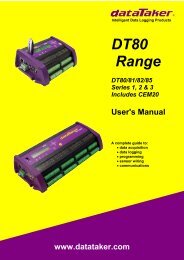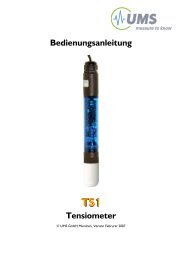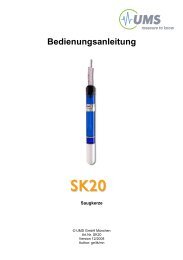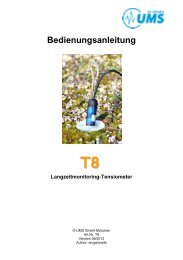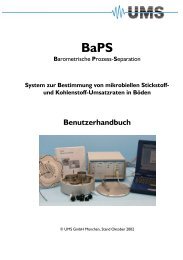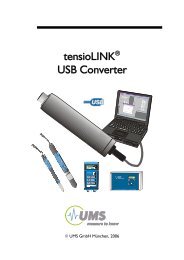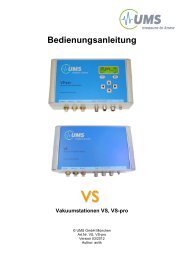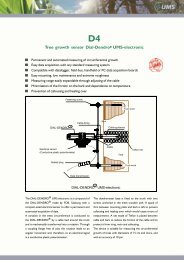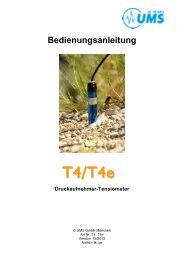T8 Manual - UMS
T8 Manual - UMS
T8 Manual - UMS
You also want an ePaper? Increase the reach of your titles
YUMPU automatically turns print PDFs into web optimized ePapers that Google loves.
Protecting the measuring site<br />
General recommendations for lightning protection and grounding for<br />
stations with battery power<br />
First step<br />
Recommendations for<br />
lightning protection on<br />
masts<br />
Recommendations for<br />
lightning protection of<br />
enclosures<br />
System protection of<br />
stations with enclosure<br />
and mast<br />
Lightning protection<br />
with grounding rods<br />
Measure the voltage drop between sensor<br />
positions, data acquisition etc. to get to know<br />
the potential levels<br />
2 or 3 meter masts can be equipped with a<br />
lightning rod which is installed on top of the<br />
mast, and a grounding rod which is clamped to<br />
the foot of the mast. This creates a certain<br />
protected space in a 45 degree angle around<br />
the tip<br />
Surge protection devices are installed in one<br />
corner inside the measuring enclosure. All lines<br />
to and from the surge protection devices should<br />
not run parallel.<br />
Lines to equalize drops in the electrical potential<br />
between mast and grounding rod are installed<br />
50 cm below the soil surface.<br />
According to the standards the ground rod<br />
(diam. 25 mm) must be inserted into the ground<br />
for a minimum of 2,5 meters below the frost<br />
level, i. e. in general 3 meters. Cross shaped<br />
rods are less advisable for such low depths, but<br />
this depends on soil type, moisture or clay<br />
content, and distance between soil surface and<br />
ground water level.<br />
43/56




